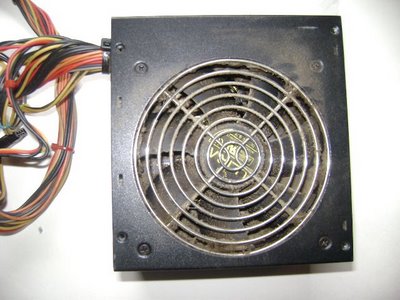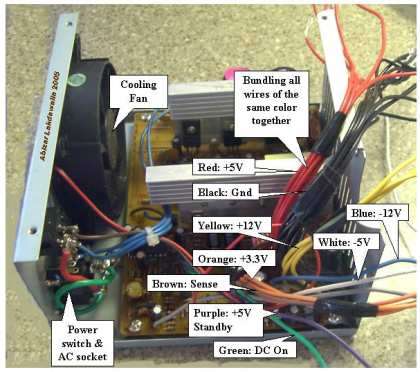How To Repair Power Supply Fan Noise
Power supply fan noisy? An improperly working fan sometimes causes power supply problems. Usually just before a fan stops working, it hums or whines, especially when the PC is first turned on.
If this has just happened, replace the fan if you are trained to service the power supply. If not, replace the entire power supply. If you replace the power supply or fan and the fan still does not work, the problem might not be the fan.
A short somewhere else in the system drawing too much power might cause the problem. Don't operate the PC if the fan does not work. Computers without cooling fans can quickly overheat and damage chips. To troubleshoot a nonfunctional fan, which might be a symptom of another problem and not a problem of the fan itself.
Power Supply Fan Problems? Follow These Steps

- Turn off the power and remove all power cord connections to all components, including the connections to the motherboard, and all power cords to drives. Turn the power back on. If the fan works, the problem is with one of the systems you disconnected, not with the power supply or its fan.
- Turn off the power and reconnect the power cords to the drives. If the fan comes on, you can eliminate the drives as the problem. If the fan does not come on, try one drive after another until you identify the drive with the short.
- If the drives are not the problem, suspect the motherboard subsystem. With the power off, reconnect all power cords to the drives.
- Turn off the power and remove the power to the motherboard by disconnecting PI or P8 and P9. Turn the power back on.
- If the fan works, the problem is probably not the power supply but a short in one of the components powered by the power cords to the motherboard. The power to the motherboard also powers expansion cards.
- Remove all expansion Cards and reconnect plugs to the motherboard.
- If the fan still works, the problem is one of the expansion cards. If the fan does not work, the problem is the motherboard or something still connected to it.
Power Supply Fan Power Problems With The MotherBoard

The motherboard, like all other components inside the computer case, should be grounded to the chassis. Look for a metal screw that grounds the board to the computer case. However, a short might be the problem with the electrical system if some component on the board makes improper contact with the chassis.
This short can seriously damage the motherboard. Check for missing stand off small plastic or metal spacers that hold the motherboard a short distance away from the chassis. A missing standoff most often causes these improper connec-tions.
Also check for extra standoffs not used by the motherboard that might be touching a wire on the bottom of the board and causing a short. Shorts in the circuits on the motherboard might also cause problems.
Look for damage on the bottom of the motherboard. These circuits are coated with plastic, and quite often damage is difficult to spot. Also look for burned-out capaci-tors that are spotted brown or corroded.
Frayed wires on cable connections can also cause shorts. Disconnect hard drive cables connected directly to the mother-board. Power up with PI or P8 and P9 connected but all cables disconnected from the motherboard. If the fan works, the problem is with one of the systems you disconnected.
Problems With Overheating
An overheated system can cause intermittent problems or cause the system to reboot or refuse 1 boot. In fact, the temperature inside the case should never exceed 100 degrees F (38 degrees C).
See Also...




